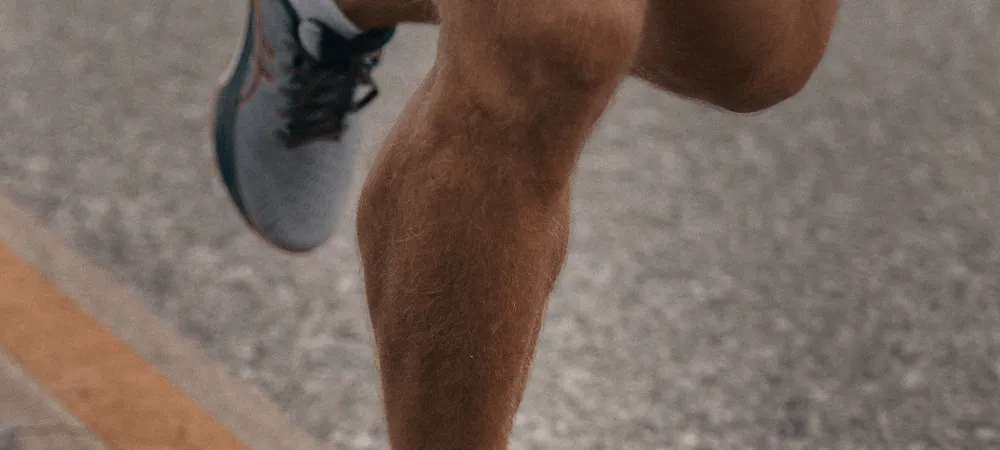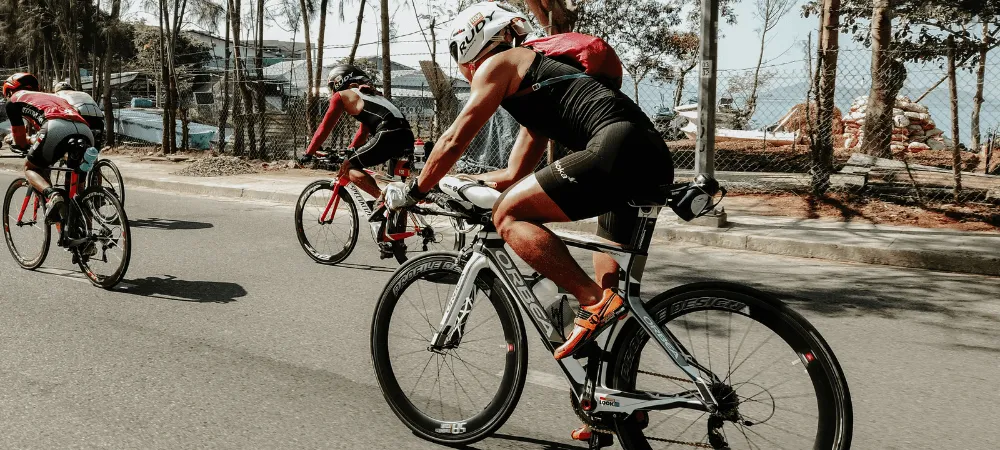Article key points: - Adding cycling is an excellent way to improve running performance - Cycling helps to become a better runner by increasing running speed, endurance and even helps prevent injuries - Several different types of bikes can be used for endurance training that will benefit running performance - Cycling develops calf and shin muscles and aids in recovery after a run - When choosing a bicycle for endurance training, be sure to select one that is appropriate for your needs
Cycling and running are two popular exercises that people often consider entirely different. However, cycling for runners can be highly beneficial, helping to improve their speed, endurance, building strength and even preventing injuries.
This article explores how cycling workouts can help runners achieve their fitness goals through cross-training.
Cycling builds strength in complementary muscles
Cycling is a great exercise to help build strength in complementary muscles. When you run, your major running muscles are your hamstrings and quads.
Cycling helps build strength in the key running muscles you use when running, such as your glutes, calves and abs. This can help you to become a stronger runner and may help to prevent injuries.
Cycling can also improve your running endurance. You use the same muscles repeatedly when you cycle, which helps improve your aerobic capacity. This can help you run for a more extended time period without getting tired.
Additionally, cycling can help increase your speed. The more stamina and strength you have, the faster you can run.
Cycling is a great exercise that can help runners achieve their fitness goals. It can help to build strength in complementary muscles, improve stamina and even increase speed. If you are looking for a way to improve your running performance, cycling may be the answer.
Cycling develops calf muscles
Cycling is a great way to build your calf muscles. When you cycle, your calves contract as you push down the pedals. This helps to tone and strengthen these muscles, which can help improve your running performance.

Cycling strengthens shin muscles
Cycling is an excellent way to add diversity to your running routine and can also help strengthen and recover your shin muscles.
Shin muscles are essential for running, as they help absorb the impact of each stride. When they are weak, this can lead to shin splints, which can be extremely painful and debilitating. Many runners use cycling to build strong shins and avoid shin splints.
Engages core muscles
Cycling builds strong core strength, which can help improve your running performance. The core muscles are responsible for maintaining balance and stability.
Engaging them can improve your overall stability and reduce the risk of injuries. Cycling is an excellent way to engage these muscles and help you run more energy efficiently.
Cycling speed up your recovery
Cycling is a great way to speed up your recovery after a run. It helps the toxins get out of your system and promotes circulation, which can help reduce inflammation and soreness and lactic acid levels.
Cycling also helps increase muscle blood flow, promoting injury recovery time and helping you feel better sooner.
If you are recovering from an injury, bike riding can be an efficient way to get back into running form. It is a low-impact exercise that can help you build strength and endurance without putting too much stress on your injured muscles.

Cycling training program workouts allow you to exercise while being injured
Cycling is considered a low-impact exercise. Injuries happen with runners, and very often, cycling is used to maintain fitness levels and prevent muscle loss.
For example, suppose you are suffering from shin splints. In that case, cycling can be a great way to help speed up your recovery while maintaining your performance peak.
What makes cycling even more beneficial is that cycling strengthens your shins and prevents the same injury in the future.
Generally speaking, if you are recovering from shin splints, cycling can be an excellent way to get back into running form.
Cycling workouts help to boost your cardiovascular health even further
Both endurance and power are the main critical aspects for runners. Endurance allows runners to maintain their pace for an extended time. And power helps runners to build up speed, so their average rate through the distance is higher.
Cycling is often more beneficial when it comes down to building your overall fitness and leg muscle strength. Cycling requires you to pedal continuously for an extended period, increasing your endurance levels.
For example, cycling in Zone 2 (which focuses on aerobic training) is a great way to train for a half marathon or a complete marathon, another long-distance running event. Training in this zone helps to increase your base fitness and improve your cardiovascular fitness.
As cycling is a way more low-impact exercise than running, it allows you to train more in Zone 2.
As a result, better endurance will allow you are running with greater efficiency and fewer injuries.
Cycling also helps with building strength and increases your leg muscle power. Thanks to being able to select different gears and simultaneously go uphill, cycling gives a much higher muscle workout than running.
To conclude, cycling is an excellent tool for better running performance as it builds overall fitness levels, muscle power and, at the same time, remains less impactful on joints.

Cycling is an excellent tool for losing body fat percentage
Cycling and running are excellent choices when it comes to losing weight.
However, cycling may be a better option than running, as it burns more calories, helps to tone your body and increases your metabolic rate.
Additionally, cycling is a low-impact exercise, which makes it gentle on the body and less likely to cause injuries.
Cycling may be better than running if you want to lose weight and tone your body.
What type of cycling should runners do to improve their running ability and stamina?
The different cycling workout programs can help boost your running performance. Here are a few of them:
– The interval workout: This involves pedaling hard for a certain amount of time, followed by rest. This helps to increase your overall fitness and strengthen your leg muscles.
– The tempo ride: This workout involves pedaling at a balanced pace for a long time. This helps to improve your cardiovascular fitness and running speed.
– The long ride: This workout involves riding at a steady ride pace for an extended time. This helps to build endurance and running speed.
All these cycling workout training plans can help boost your running performance, and they are all easy to do and can be completed quickly.
If you want to improve your running performance, try one of these cycling workouts.
How to make sure that cycling and running cross-training doesn’t interfere with running goals and progress?
The way to ensure that cycling does not interfere with your running goals and progress is to ensure you’re only doing it on non-running days. Cycling should be something you do in addition to your normal running routine—not instead of it.
Additionally, be sure to listen to your body and adjust accordingly. If you feel too tired after a bicycle ride, scale back the intensity or duration of future bicycle rides so that you don’t overdo it.
With proper planning and execution, cycling can be a great complement to your run training!
By following the mentioned tips, you can make sure that cycling is a beneficial addition to your running training and does not interfere.

How to get started with cycling?
If you are interested in getting started cycling, there are a few things you need to know. Here are a few tips to help you get started:
– Choose the right bicycle: When choosing the correct bike type, select one that is appropriate for your needs. Understanding whether you want to cycle on paved terrain or somewhere off-road is essential.
– Determine the correct bike size: One of the most critical aspects of the cycling world. The right bike size is essential to feel as comfortable as possible while being stable.
– Wear the proper clothing: When cycling, be sure to wear comfortable clothing that allows you to move freely. Cycling shorts and a moisture-wicking shirt are ideal.
– Get fitted for a helmet: When cycling, it is essential to wear a helmet for safety reasons. Be sure to get fitted for a helmet at your local bike shop.
Once you have followed these tips, you are ready to start cycling! Be sure to take advantage of the many benefits that cycling has to offer.

Different bike types
Mountain bikes: Also known as an MTB. A great choice for off-road cycling workouts that focus on building strength in the lower body and core.
Road bike: One of the fastest bikes made ever. Designed for high-speed and long-distance workouts. Perfect for both cardio workouts and recovery day training. Many runners prefer this bike because it allows them to train for longer sessions that target aerobic training.
Spin bike: Also called a stationary bike. Many athletes prefer indoor sessions because it’s easier to control their pulse. Perfect for sprint intervals and long-distance cardio workouts.
Cyclocross bike: Excellent choice for those who live in a climate where it can snow. Due to better clearance and a longer wheelbase, it offers more stability in the snow.
If you need clarification on what bike types exist, you can read a fully dedicated article on this topic here.

Conclusion
Can cycling help with running? So if you’re looking to take your running performance up a notch, cycling might be the answer. Not only can it help increase your speed and aerobic capacity, but it can also help prevent injuries from occurring due to less stress on joints.
We can agree that cycling for runners has its benefits. Nevertheless, it’s important to understand that cycling workouts shouldn’t replace your running plan, and the overall training program should be built around your main goal.
Cycling for runners should stay as an addition to the existing running training plan. Whether runners prepare for long distances such as a half marathon, full marathon, or short distance runs, they should put most of their training hours into running workouts.
When choosing a bike for this type of training, select one appropriate for your needs. With the right equipment and some hard work, you’ll be on your way to becoming an endurance machine in no time!

